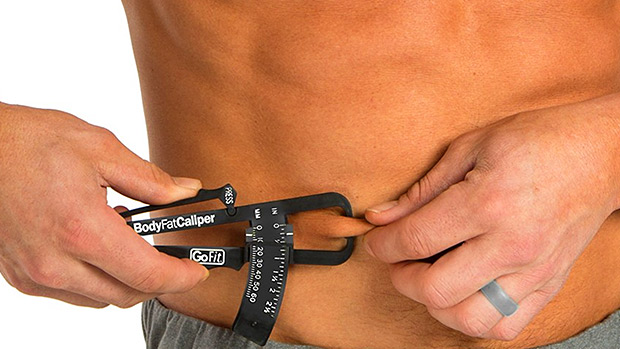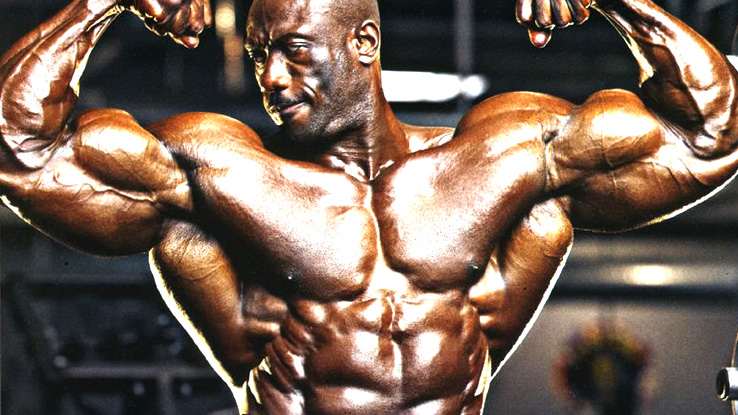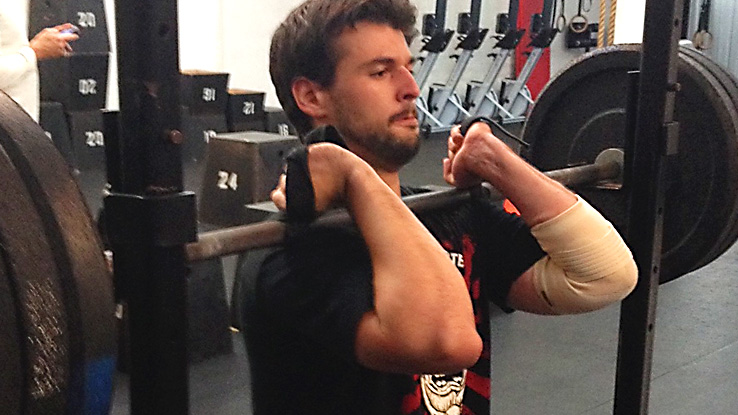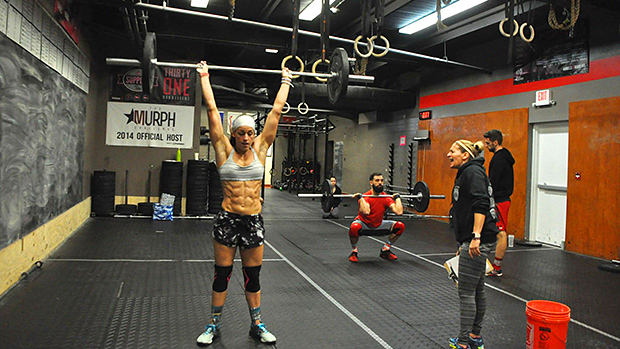Keeping Muscle While Losing Fat
Losing muscle while dieting isn't a real risk as long as you don't get below a "real" 9 percent body fat or so. I say "real" because most people who think they're 9-10 percent are more like 13 percent or higher. Look at this photo of me:

Pretty lean, right? What do you think my body fat was there? 6 percent? 5 percent?
Try 9.2 percent! The point is, if you keep training hard and consume enough protein, there's no reason for you to worry about muscle loss until you get THAT lean or close to it.
Now, you may have the impression that you're losing muscle because you'll feel and look smaller. You tend to lose water, fat, intramuscular triglycerides, glycogen, etc. when dieting. And unfortunately, until you're really lean you won't look that much better. So you'll feel smaller in your clothes and you won't look that much more muscular.
And because of the loss of water, your strength can actually decrease too, especially on big compound movements (mostly pressing exercises). So it's easy to interpret that as muscle loss. But in most cases, it isn't.
The Cortisol Factor
The only reason you may lose muscle while training hard is the overproduction of cortisol. Cortisol is known as a "stress hormone" because it's released during periods of stress. Training is a stress. So is being underfed.
Two key roles of cortisol are:
- To mobilize stored energy (body fat, muscle glycogen, amino acids as muscle tissue) to fuel our workouts.
- To increase blood sugar levels when they dip down too low when we cut carbs and calories.
Chronic and excessive cortisol elevation is the main reason for losing muscle because it directly causes a breakdown of muscle tissue. It also slows down muscle repair/rebuilding by inhibiting the immune system (which is the driver of muscle growth) and limits how much muscle you can carry by increasing myostatin, a protein that acts as the governor for how much muscle your body allows you to carry (more myostatin means less muscle).
Cortisol's function during the training session is to mobilize energy so that the muscles have enough fuel. So the more volume you do in your workout, the more cortisol you produce. That's why if you're a natural lifter, increasing training volume while trying to get lean (and reducing calories) is one of the things that can lead to muscle loss.
"Yeah, but bodybuilding gurus recommends doing a metric ton of volume to shred the fat."
Well, yeah, if you're on anabolics, it'll work because steroids will protect you against the muscle-wasting effect of cortisol. But if you're natural, trying to use the workout to burn more calories is one of the best ways to lose muscle!
Rep Ranges and Fat Loss
Now, I'm not against higher rep ranges for losing fat. Sets that last 40-70 seconds can be effective at preserving muscle mass while dieting. These lighter sets won't cause as much muscle damage and are easier to recover from.
That's also the set duration where you have the greatest release of lactic acid, which is, in itself, anabolic – it can help preserve muscle mass. So the inclusion of some lactic work along with some heavier work is the best combination to maintain muscle because both provide different growth stimuli which will make it easier to maintain or even gain muscle.
The key is to keep overall volume low and overall frequency high:
- Volume will increase cortisol, which increases the risk of losing muscle.
- Frequency will help maintain muscle mass by triggering protein synthesis (muscle growth) more often.
I recommend The Best Damn Workout Plan for Natural Lifters because it's designed to prevent the potential cortisol backlash and will allow the natural lifter to easily maintain or even increase muscle mass while dieting down.





